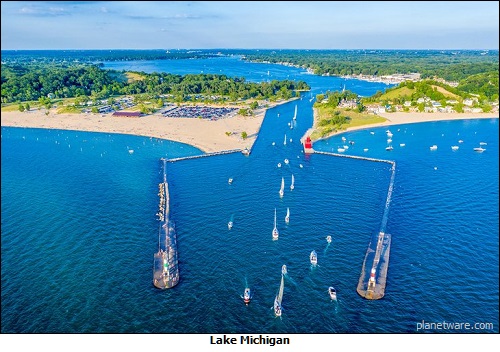
|
|

|
|
| April 18, 2024 |
|
Climate change is turning lakes a different color 
Blue lakes run the risk of losing their color due to climate change, a new study shows.
A team of researchers from across the country examined 5.14 million satellite images for 85,360 lakes and reservoirs from around the world and taken between 2013 to 2020 to figure out the most common water color. Researchers chronicled and published their findings in the bi-weekly peer-reviewed scientific journal Geophysical Research Letters earlier this week. The seven study authors found that the Earth’s lakes fell into two primary color groups, blue lakes and green-brown lakes. Blue lakes are far less common than green-brown lakes and make up less than one third of the planet’s lakes, the study found. They are also more likely to be clustered together. Algae and sediments impact lake color, so study authors characterized lake color by determining the frequent lake color over seven years. Researchers took those findings and used them to create an interactive map where users can explore the most common lake colors. But researchers also found that air temperature, precipitation, lake depth and elevation also affect lake color. Researchers found that blue lakes tend to be deeper than their green-brown counterparts and located in cool, high-latitude regions with high precipitation and winter ice cover. Meanwhile, green-brown lakes are found in drier regions, along coastlines and continental interiors, the study also found. This influence of climate on lake color led the study authors to believe that if global temperatures continue to change, so will the color of blue lakes. If climate change persists, the percentage of blue lakes may decrease. “Warmer water, which produces more algal blooms, will tend to shift lakes towards green colors,” said Catherine O’Reilly, an aquatic ecologist at Illinois State University and co-author of the study. “There are lots of examples of where people have actually seen this happen when they studied one individual lake.” Americans get their drinking water from lakes, streams and ground water. Study authors noted that one consequence of lake color change could be an increase in water treatment costs since color is a common metric used to determine water quality. “If you’re using lakes for fisheries or sustenance or drinking water, changes in water quality that are likely happening when lakes become greener are probably going to mean it’s going to be more expensive to treat that water,” said O’Reilly. “There might be periods where the water isn’t usable, and fish species might no longer be present, so we’re not going to get the same ecosystem services essentially from those lakes when they shift from being blue to being green.” Changing lake color could also impact cultural or recreational activities, researchers added. As global temperatures rise, lakes in northern Europe will most likely lose winter ice cover, which could mean less cold-weather activities. “Nobody wants to go swim in a green lake,” O’Reilly said. “So aesthetically, some of the lakes that we might have always thought of as a refuge or spiritual places, those places might be disappearing as the color changes.” (Source: The Hill) Story Date: September 25, 2022
|